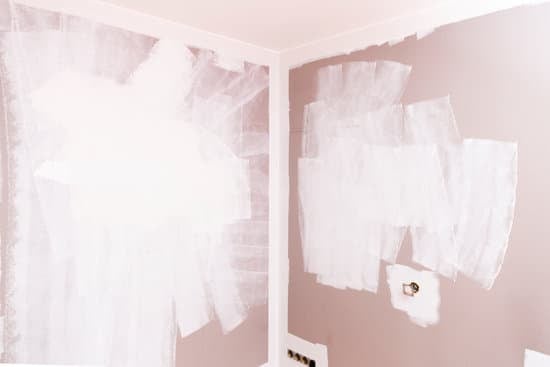For all the golf enthusiasts out there, you don’t need to be on the course to improve your game. In fact, taking the time to practice at home can greatly enhance your skills and elevate your performance when it’s time to hit the greens.
Whether you’re a beginner looking to master the basics or an experienced player hoping to fine-tune specific aspects of your game, practicing at home offers a myriad of benefits that can take your golfing prowess to new heights.
Practicing at home provides a convenient and accessible way to work on your game whenever you have spare time. No longer do you have to wait for tee times or worry about fitting in a quick round after work. With a dedicated practice area at home, you have the flexibility and freedom to hone your skills on your own schedule. This allows for more frequent and consistent practice sessions, which are key components in improving any sport.
Furthermore, practicing at home can improve various aspects of your golf game. From enhancing your swing technique and perfecting putting accuracy to building strength and developing mental focus, each aspect plays a vital role in achieving success on the golf course. By dedicating focused practice time at home, you can isolate these areas and concentrate on improvement without distractions.
So whether you dream of lowering your handicap or simply want to enjoy a better experience while playing with friends, consider turning your home into a golf training haven. In this article, we’ll explore various ways in which you can utilize your living space to boost your performance on the course.
From setting up a home practice area and mastering swing technique to sharpening short game skills and improving mental focus, this guide will provide you with the tools needed for unlocking hidden potential on the fairway.
Setting up Your Home Golf Practice Area
Setting up a dedicated space for your home golf practice area is crucial to creating a conducive and enjoyable environment for improving your game. Whether you have limited space or a whole room to spare, here are some tips to help you set up your own personal golf sanctuary.
Selecting the Right Space
When choosing the location for your home golf practice area, consider factors such as noise level, accessibility, and available space. If possible, select an area where you can easily move around without any obstructions. This will allow you to practice various aspects of your game without feeling constrained.
If noise is a concern, try to choose an area in your home that is away from bedrooms or living spaces where others may be disturbed by the sound of swinging clubs or balls hitting the net.
Essential Equipment
To create an effective home practice area, there are several essential pieces of equipment you’ll need:
- Hitting Net: A high-quality hitting net is essential for practicing full swings and ensuring that golf balls don’t damage surrounding areas.
- Putting Mat: Investing in a putting mat allows you to work on your putting stroke indoors. Look for one with various hole positions and realistic turf.
- Mirror: A mirror can be used to check your setup and alignment during practice sessions.
- Golf Balls: Stock up on enough golf balls so that you don’t have to constantly retrieve them during each practice session.
These basic items will provide a solid foundation for practicing all aspects of your game at home.
Making it Conducive
Creating a comfortable and conducive environment in your home practice area can significantly enhance the effectiveness of your practice sessions.
Consider adding some indoor plants or artwork depicting scenic golf courses to create a serene atmosphere. Make sure there is ample lighting in the area so that you can clearly see your swing mechanics and ball flight.
Additionally, consider incorporating some storage solutions to keep your equipment organized and easily accessible. This will help minimize distractions and streamline your practice routine.
By creating a dedicated space for your home golf practice area, you can eliminate the need for frequent trips to the driving range or golf course while still enjoying the benefits of regular practice.
Mastering the Basics
When it comes to improving your golf game, mastering the basics of swing technique is essential. By practicing your swing at home, you can focus on perfecting your form without distractions. Here are some steps and tips to help you enhance your swing technique in the comfort of your own home.
Step-by-step guide to improving your golf swing at home
- Set up a designated practice area: Find a spacious room or outdoor space where you can comfortably swing a club without any hindrance. Make sure there is enough space for you to take a full swing.
- Utilize mirrors: Place a mirror in front of you while practicing your swing. This will allow you to visually analyze your form and make necessary adjustments.
- Start with grip and posture: Grip the club correctly and stand in a balanced position with proper posture. Align yourself parallel to the target line, with the clubface square to the target.
- Work on takeaway and backswing: Start with a slow and controlled takeaway, ensuring that your wrists remain passive until halfway through the backswing. Focus on maintaining spine angle and keeping your shoulders turning properly.
- Achieve proper sequencing: Practice transitioning from backswing to downswing smoothly by starting lower body movement before upper body movement. This sequencing is crucial for generating power and accuracy in your shots.
- Follow-through and finish: After impact, rotate your body fully through the shot, extending both arms towards the target as you complete your follow-through. Maintain good balance throughout this motion.
Recommended drills and exercises to enhance swing mechanics
- One-handed swings: Practice swinging using only one hand at a time, alternating between hands. This drill helps improve hand-eye coordination and allows you to focus on specific aspects of your technique.
- Alignment stick drill: Place an alignment stick on the ground to represent your target line and use it to check your alignment during your swing. This will help you develop consistent alignment habits.
- Slow-motion swings: Perform slow-motion swings to pay attention to every detail of your technique. This drill enables you to identify any flaws or inconsistencies and make corrections.
- Impact bag strikes: Use an impact bag or a pillow as a target and strike it with your club at the point of impact. This exercise helps improve the power and accuracy of your strike.
By incorporating these drills into your practice sessions, you can refine your swing technique and build muscle memory, leading to more consistent and effective shots on the golf course.
| Drill | Description |
|---|---|
| One-handed swings | Practice swinging using only one hand at a time, alternating between hands. |
| Alignment stick drill | Use an alignment stick on the ground to check alignment during the swing. |
| Slow-motion swings | Perform swings in slow motion to analyze technique in detail. |
| Impact bag strikes | Strike an impact bag or pillow with your club at the point of impact. |
Sharpening Your Short Game
When it comes to golf, having a strong short game can make all the difference in your overall score. Improving your putting and chipping skills is essential for lowering your handicap and becoming a more well-rounded player. The good news is that you can sharpen these skills right from the comfort of your own home. In this section, we will explore various tips, techniques, and drills to enhance your putting and chipping abilities at home.
To start improving your putting at home, you don’t need much space or equipment. One of the simplest ways to practice is by setting up a small putting mat in a quiet area of your house. This allows you to simulate real-life putting situations without having to go to the golf course. Additionally, there are various DIY options available online if you want to create a more customized and realistic indoor putting green.
Alongside practicing on a putting mat, incorporating drills can significantly enhance your skills. One effective drill is called “gate drill,” where you set up two alignment sticks or any other straight objects as gates on either side of the hole.
The goal is to stroke the ball through the gates consistently, promoting accuracy and control. Another useful drill is “distance control,” where you place several balls at different distances from the hole and aim to get each one within a specific radius around the target.
When it comes to chipping, an indoor hitting net can be a valuable investment for home practice sessions. These nets provide a designated area for chip shots while preventing damage to surroundings due to mishits. You can set up targets at varying distances around the net or create landing zones using colored tape or cones for added accuracy training. Additionally, focusing on consistency with chip shots through repetition will help build muscle memory and improve touch around the greens.
| Tips for Sharpening Your Short Game at Home |
|---|
| Set up a putting mat in a quiet area of your home. |
| Incorporate drills such as the gate drill and distance control to improve putting accuracy and consistency. |
| Invest in an indoor hitting net for chipping practice and set up targets or landing zones for added aiming precision. |
| Focus on consistent repetition to develop muscle memory and touch around the greens. |
Improving Strength and Flexibility
As any experienced golfer knows, physical fitness plays a crucial role in your game. Having a strong core and good flexibility can help you generate power, enhance your swing mechanics, and prevent injuries. Fortunately, you don’t need to go to the gym to improve your fitness for golf. With some simple home workouts, you can work on building strength and flexibility right from the comfort of your own home.
Importance of Physical Fitness for Golfers
Physical fitness is often overlooked by amateur golfers, but it can make a significant difference in their game. Having a strong core helps stabilize your body during the swing, allowing you to transfer power efficiently through the ball. Additionally, good flexibility enables you to achieve a full range of motion in your swing, leading to better clubhead speed and accuracy.
Sample Home Workout Routines focusing on Golf-Specific Exercises
There are various exercises that specifically target the muscles used in golf. Incorporating these exercises into your home workout routine can help improve your overall strength and power on the course. Here are a few examples:
- Medicine Ball Rotational Throws: Stand with feet shoulder-width apart and hold a medicine ball at chest level. Rotate your torso as far as possible to one side while keeping your lower body stable. Then explosively throw the ball against a wall or into the air while rotating towards the opposite side. Repeat for multiple sets on each side.
- Plank Variations: The plank exercise is excellent for strengthening both your core and upper body muscles. To make it more challenging and golf-specific, try doing plank variations such as side planks or performing planks with leg lifts.
- Resistance Band Exercises: Invest in some resistance bands that offer different levels of resistance for various exercises targeting different muscle groups used in golf. These exercises can include lateral band walks, resistance band rows, and standing rotational twists with a resistance band.
Stretching Exercises to Improve Flexibility and Prevent Injuries
In addition to strength training, it is crucial to include stretching exercises in your home workout routine for golf. Stretching helps improve flexibility, which can increase your swing’s range of motion and reduce the risk of injuries. Here are a few stretches that are beneficial for golfers:
- Standing Side Bend Stretch: Stand with feet shoulder-width apart, raise one arm above your head, and gently reach towards the opposite side while keeping your core engaged. Hold for 20-30 seconds on each side.
- Hip Flexor Stretch: Kneel on one knee with the other foot flat on the ground in front of you. Keep your back straight and gently move your hips forward until you feel a stretch in the front of your hip and thigh. Hold for 20-30 seconds on each side.
- Shoulder Cross-Body Stretch: Stand or sit up straight and extend one arm across your chest. Use the other arm to gently pull the extended arm closer to your body until you feel a stretch in your shoulder and upper back muscles. Hold for 20-30 seconds on each side.
By incorporating these golf-specific exercises and stretching routines into your home workouts, you can significantly improve your strength and flexibility, which will ultimately lead to better performance on the course. Remember to consult with a fitness professional or a coach if you have any specific concerns or limitations before starting any new exercise program.
Mental Game Mastery
Enhancing your mental game is a crucial aspect of improving your golf performance, and you can work on this important skill even from the comfort of your own home. Developing a strong mental game can help you maintain focus, manage distractions, and build confidence on the course. Here are some techniques and strategies that you can incorporate into your home practice sessions to enhance your focus and confidence.
- Visualization exercises: Visualization is a powerful tool that can help you improve your performance by mentally rehearsing successful shots and situations. Spend time visualizing yourself executing perfect swings, making accurate putts, or confidently chipping onto the green. By vividly imagining these scenarios, you are training your brain to respond positively when faced with similar situations on the course.
- Breathing techniques: Deep breathing exercises can help calm the mind and reduce anxiety or nervousness that may arise during golf rounds. Incorporate deep belly breathing into your daily routine at home to relax both your body and mind. You can also practice mindful breathing while visualizing yourself playing well on the golf course.
- Positive self-talk: One way to boost confidence is through positive self-talk. Replace negative thoughts or self-doubt with affirmations and encouraging statements. For example, instead of saying “I always mess up my putting,” reframe it as “I am improving my putting skills every day.” The language we use has a powerful impact on our mindset, so consciously choose words that build confidence and belief in yourself.
Additionally, maintaining a consistent practice schedule at home is essential for honing your mental game. Create a dedicated space for your practice sessions where you feel comfortable and focused. Eliminate distractions such as phones or other electronic devices that may disrupt your concentration. Set specific goals for each practice session to keep yourself motivated and engaged.
By incorporating these mental game techniques into your home practice routine, you will not only develop greater focus and confidence but also strengthen those skills when you play on the golf course. Remember that improving your mental game is a continuous process, so be patient with yourself and enjoy the journey of becoming mentally stronger in your golf game.
Analyzing Your Performance
In today’s digital age, technology has become an invaluable tool for improving various aspects of our lives, and golf is no exception. By utilizing technology for data-driven improvement, you can gain valuable insights into your performance and identify areas for growth. This section will explore the different tools and techniques available to analyze your performance and take your golf game to the next level.
One popular method for analyzing your golf swing is through the use of golf swing analysis tools and apps. These innovative tools allow you to capture your swing on video and break it down frame by frame, providing a detailed analysis of your technique. With features such as slow motion playback and side-by-side comparisons with professional golfers, these tools can help you pinpoint flaws in your swing mechanics that may be holding you back.
Another benefit of utilizing technology for data-driven improvement is the ability to track and analyze performance data. There are now a variety of devices available that can collect data on metrics such as club speed, ball spin rate, launch angle, and shot dispersion. By reviewing this data over time, you can identify patterns and trends in your performance, allowing you to make more informed decisions about areas that need improvement.
When it comes to choosing the right technology for analyzing your performance, there are several options available on the market. Launch monitors are one popular choice, as they provide accurate measurements of key metrics during practice sessions or even on the course. Additionally, mobile apps specifically designed for golfers can provide a wealth of information and analysis tools right at your fingertips.
Staying Engaged
Staying engaged and motivated during home practice sessions is crucial for continuous improvement in your golf game. While it may be convenient to practice at home, it can also become monotonous if you don’t find ways to keep it interesting. In this section, we will explore some fun and creative golf drills that can make your home practice sessions more enjoyable.
One way to keep your home practice interesting is by incorporating unique and interactive drills into your routine. For example, you can set up targets around your hitting net or in your backyard and challenge yourself to hit specific areas with different clubs. This not only helps improve your accuracy, but also adds an element of competition to your practice.
Another idea is to incorporate games and challenges into your home practice routine. You can simulate different on-course scenarios, such as hitting out of tricky lies or playing imaginary holes, and try to achieve certain scores or objectives. This not only makes your practice more enjoyable but also helps simulate real-life situations that you may encounter during a round of golf.
To maintain consistency in your home practice, it’s important to establish a schedule and stick to it. Treat your home practice sessions just like you would a tee time at the golf course – block off dedicated time in your calendar and commit to practicing regularly. By making it a habit, you’ll be more likely to stay engaged and see progress in improving your golf game.
Conclusion
Improving your golf game at home is not only convenient, but it can also be incredibly beneficial for various aspects of your overall game. By setting up a dedicated practice area in your home and utilizing the right equipment, you can enhance your swing technique, sharpen your short game skills, improve your strength and flexibility, develop a strong mental game, analyze your performance using technology, and keep yourself engaged with fun and creative drills.
The key to success in golf lies in consistency and dedication, and practicing at home provides the perfect opportunity to establish a regular practice routine. By following the tips and techniques outlined throughout this article, you have all the tools necessary to take your golfing skills to new heights. With time and effort invested in regular practice sessions at home, you will surely see improvements in your performance on the course.
It’s important to remember that consistent practice is a journey rather than a destination. Progress may be gradual, but every small improvement adds up over time. So stay committed, stay motivated, and embrace the process of self-improvement.
The long-term benefits of practicing regularly at home are not just limited to improving specific aspects of your golf game. They extend beyond the course as well-building discipline, focus, confidence, and resilience that can be applied to every aspect of your life.
Ultimately, whether you’re an amateur golfer looking to break 90 or a seasoned player aiming for low scores on competition days – starting from scratch or trying out new techniques – never underestimate the power of practicing at home. Your path to golfing greatness starts right here in the comfort of your own personal golf sanctuary. Embrace this opportunity for growth and watch as you transform into an even better golfer with each swing.
Frequently Asked Questions
How can I improve my golf game easily?
Improving your golf game can be achieved by focusing on a few key areas. Firstly, practicing regularly is essential. Spending time on the driving range or practice green to work on your swing and putting technique can help to refine your skills.
Additionally, seeking professional instruction from a golf coach can provide valuable feedback and guidance tailored to your specific needs. Another effective strategy is watching professional golfers play and studying their techniques, as this can offer insights into proper form and execution. Finally, maintaining a positive mindset, staying patient, and setting realistic goals are crucial elements for improving your golf game.
How can I become a better golfer at home?
Becoming a better golfer at home involves engaging in activities that can enhance various aspects of your game even outside the golf course. One way is to invest in a quality putting mat or even create one at home using household items like cups or jars as targets. Practicing putting indoors allows you to focus on your stroke mechanics and develop consistent rhythm and pace control.
Additionally, watching instructional videos or reading books about the mental side of golf can provide valuable insights into developing strategies for improving concentration and managing pressure during rounds. Lastly, utilizing golf training aids such as swing trainers or alignment sticks at home can help reinforce correct form and muscle memory.
How can I improve my golf game overnight?
It’s important to note that significant overnight improvement in golf is unrealistic due to the nature of the sport requiring dedication, practice, and experience over time. However, there are ways you can make immediate adjustments that might positively impact your performance on the course the next day. Firstly, analyzing your individual weaknesses during previous rounds can help identify areas for improvement – whether it’s working on your short game or focusing on maintaining proper posture throughout swings.
Secondly, fine-tuning your pre-shot routine by incorporating visualizing shots or adopting relaxing breathing exercises may improve focus under pressure situations in a short period of time. Lastly, ensure you get enough rest before playing a round; being well-rested will contribute to your mental and physical readiness, which can lead to better decision-making and execution on the course.

I’m thrilled to have you here as a part of the Remodeling Top community. This is where my journey as an architect and remodeling enthusiast intersects with your passion for transforming houses into dream homes.





